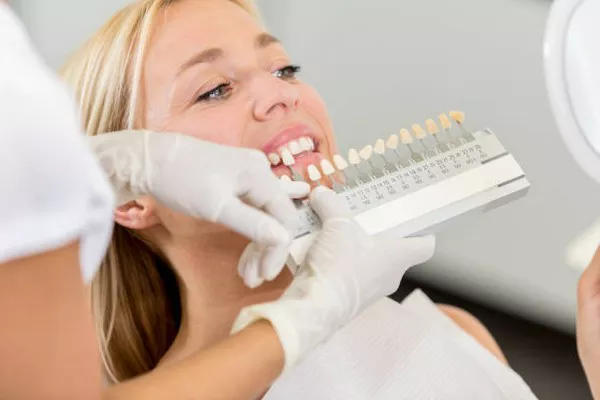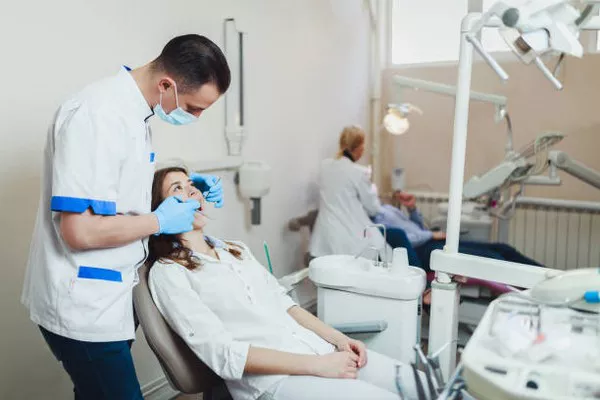Teeth whitening has become an increasingly popular cosmetic dental procedure in recent years. Many people are seeking ways to brighten their smile and improve their overall appearance. While a brighter smile can certainly boost your confidence, many people wonder whether or not teeth whitening is safe. In this article, we will explore the safety of teeth whitening procedures and answer some common questions that people may have on the topic.
Understanding Teeth Whitening
Before we dive into the safety of teeth whitening, it’s important to understand how the process works. Teeth whitening involves using chemicals to remove stains and discoloration from the teeth. The most common whitening agents used in dental offices are hydrogen peroxide and carbamide peroxide.
Hydrogen peroxide is a bleaching agent that penetrates the enamel of the tooth and breaks down the molecules that cause staining. Carbamide peroxide is another commonly used whitening agent that breaks down into hydrogen peroxide and urea when applied to the teeth. Both of these chemicals work by releasing oxygen atoms, which react with the molecules that cause stains on the teeth.
Is Teeth Whitening Safe?
The short answer is yes, teeth whitening is generally considered safe when performed by a professional dentist. However, as with any medical or dental procedure, there are some risks associated with teeth whitening that should be taken into consideration.
To begin with, over-the-counter teeth whitening products such as whitening strips and gels may not be as safe as professional whitening procedures. These products may contain higher concentrations of teeth whitening chemicals than are recommended for safe use. This can lead to tooth sensitivity, gum irritation, and even damage to the enamel of the teeth.
Professional teeth whitening procedures, on the other hand, are typically safer because they are performed under the supervision of a licensed dentist. The dentist will evaluate your oral health before the procedure and determine the appropriate whitening solution to use based on your individual needs.
There are some risks associated with professional teeth whitening procedures as well. The most common side effect is tooth sensitivity, which can occur during or after the procedure. This sensitivity typically resolves within a few days and can be managed with over-the-counter pain relievers or desensitizing toothpaste.
Another risk associated with teeth whitening is gum irritation. If the whitening solution comes into contact with the gums, it can cause irritation and inflammation. This can be prevented by using a barrier gel to protect the gums during the procedure.
Finally, there is a risk of enamel damage if the teeth are over-bleached. This can lead to weakened teeth that are more prone to decay and other dental problems. However, this risk is minimal when the procedure is performed by a licensed dentist who follows proper safety protocols.
Alternative Teeth Whitening Options
If you are concerned about the safety of teeth whitening procedures, there are alternative options available. One option is to simply avoid foods and beverages that can stain the teeth, such as coffee, tea, and red wine. Another option is to use whitening toothpaste, which can gradually remove surface stains from the teeth.
For those who are looking for a more dramatic improvement in the whiteness of their teeth, there are natural remedies that can be used to safely whiten teeth. For example, baking soda can be mixed with water to create a paste that can be applied to the teeth and left on for a few minutes before rinsing. Hydrogen peroxide can also be diluted with water and used as a mouthwash to whiten teeth.
Is LED teeth whitening safe for enamel?
LED teeth whitening is generally considered safe for enamel when used properly and according to the manufacturer’s instructions. The whitening gel used in LED teeth whitening treatments contains hydrogen peroxide or carbamide peroxide, which works by breaking down the stain molecules on the teeth’ surface.
When the gel is exposed to blue LED light, it activates and penetrates deep into the tooth’s enamel layers. The LED light helps to accelerate the whitening process and enhance its effectiveness without causing damage to the enamel.
However, it is important to note that overuse or misuse of LED teeth whitening devices can cause tooth sensitivity and damage to the enamel, particularly if the intensity of the LED lights or concentration of the whitening gel is too high. It is always advisable to follow the manufacturer’s instructions carefully and avoid using the device for longer than recommended to minimize potential risks and side effects.
It is also essential to maintain good oral hygiene habits and avoid consuming foods and drinks that can stain your teeth, such as coffee, tea, and wine. Regular dental check-ups and cleanings can help ensure that your teeth are healthy and free from decay or other issues that can compromise your enamel’s strength and integrity.
In summary, when used correctly and according to the manufacturer’s instructions, LED teeth whitening is a safe and effective way to achieve a brighter, healthier-looking smile without causing damage to the enamel.
Conclusion
Teeth whitening is generally considered safe when performed by a professional dentist. However, there are some risks associated with the procedure, including tooth sensitivity and gum irritation. It’s important to discuss any concerns you may have with your dentist before undergoing the procedure.
If you are uncomfortable with the idea of teeth whitening, there are alternative options available. Talk to your dentist about natural remedies or other cosmetic dental procedures that may be more suitable for your needs. Ultimately, the decision to whiten your teeth should be based on a thorough understanding of the risks and benefits involved.
Related Topics:






























